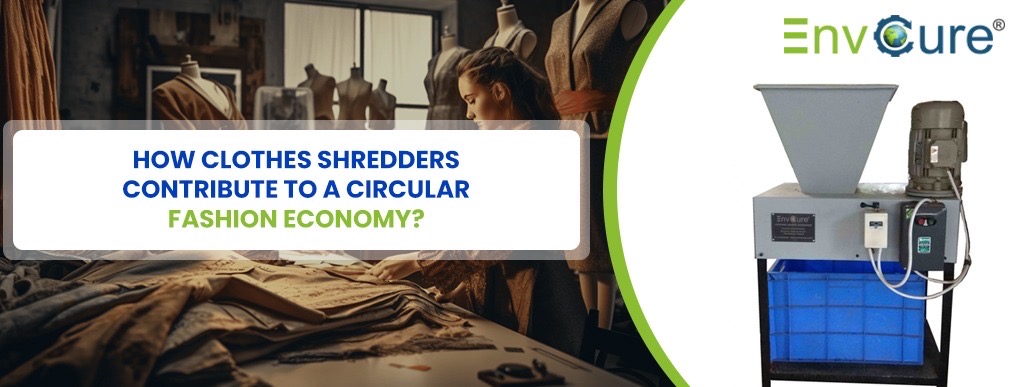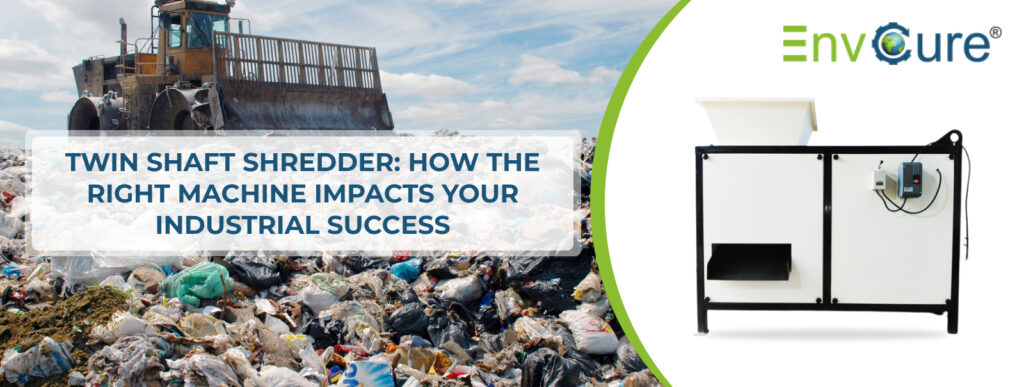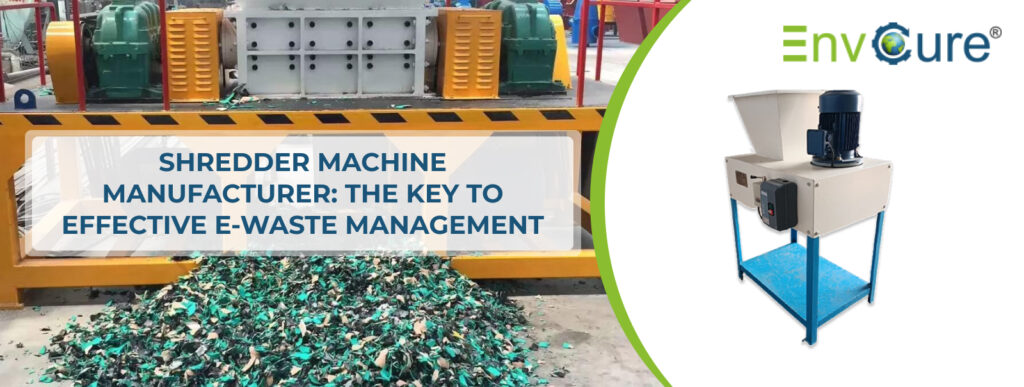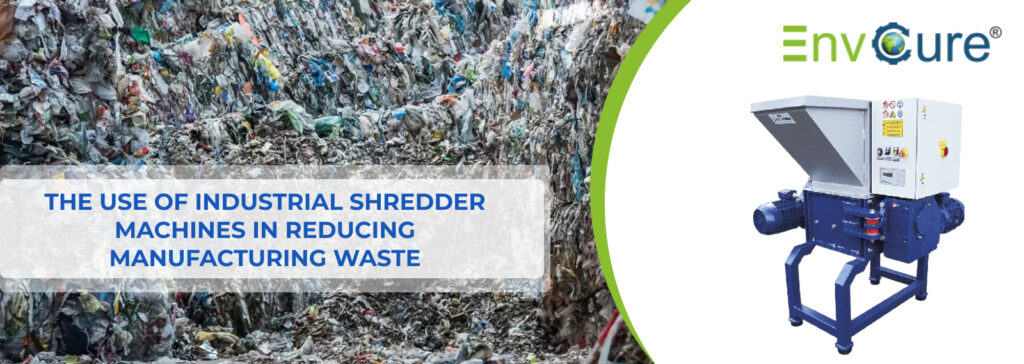The fashion industry, infamous for its substantial environmental footprint, is on a journey to a transformative shift towards sustainability. Clothes shredders play a pivotal role in this transformation, paving the way for a circular fashion economy that not only embraces style but also champions the cause of the environment.
What are Clothes Shredder Machines?
Clothes shredder machines, also known as textile shredders, are specialized equipment designed for processing a high volume of fabric, textile, and apparel waste. They are an integral part of textile recycling, contributing significantly to environmental sustainability. These machines are engineered to shred cloth rapidly, thereby streamlining the textile waste recycling process, reducing environmental impact, and conserving resources.
Key Features and Benefits:
- Efficiency in Recycling: These machines enable faster processing of textile waste, minimizing manual labor required for cutting and shredding cloth. They ensure materials are shredded to desired specifications, optimizing resource utilization and producing consistent, uniform output, crucial for quality recycling.
- Space Optimization: Cloth shredders are designed to reduce the bulk of the discarded fabric, aiding in maximizing storage space. This feature is especially beneficial in managing workspaces by efficiently using available storage areas, making them suitable even for smaller environments with limited capacity.
- Environmental Benefits: Utilizing cloth shredders significantly reduces waste generation by enabling the efficient utilization of textile scraps. This process aids in resource conservation by facilitating the recycling and repurposing of textile materials, thereby minimizing environmental impact and enhancing the circular economy.
- Material Reuse: These machines enable the repurposing of textile waste, turning fabric scraps into resources for new products. This approach not only conserves natural resources but also offers cost savings and promotes creative innovation in producing new items from recycled textiles.
- Industrial Applications: Their robust design makes them suitable for prolonged industrial use. They are engineered for low-speed and high-torque operation, which offers durability and quiet operation, with reduced wear and tear.
Understanding the Circular Fashion Economy
The circular fashion economy is a transformative approach that challenges the traditional ‘take-make-waste’ model by emphasizing sustainable production and consumption. In this economy, the focus is on extending the life cycle of garments, promoting recycling, and minimizing waste.
Innovative strategies, such as utilizing computerized cutting machines for precise pattern optimization and adopting zero-waste pattern making, play a crucial role in reducing fabric waste during production. These practices not only showcase a commitment to environmental sustainability but also appeal to eco-conscious consumers, a growing demographic within the fashion industry.
The Ellen MacArthur Foundation has been instrumental in promoting the circular economy within the clothing industry, focusing on sustainable production and reducing product waste. Their collaborative initiatives with global brands and retailers, educational programs, and support for innovation and research have catalyzed the adoption of sustainable practices in clothing production.
The Role of Clothes Shredder Machines
Circularly, Clothes Shredder machines have emerged as a key technology. These machines facilitate the recycling process by breaking down used clothing into fibres that can be reused. This not only diverts waste from landfills but also reduces the demand for new raw materials, thereby lessening the industry’s overall environmental impact. The integration of Dual Shaft shredder machines, known for their efficiency and versatility, has further enhanced the capability to recycle various textile materials. These technological advancements are crucial for the fashion industry’s shift towards sustainable practices.
Innovations in Shredding Technology
The development of advanced shredding technologies, particularly Dual Shaft shredder machines, has significantly improved the efficiency and scope of fabric recycling. These machines are capable of handling diverse materials, ensuring that more textiles can be reclaimed and repurposed. This progression is vital in fostering a more sustainable fashion industry where the reduction of waste and the utilization of recycled materials become integral to the design and production processes.
The Impact on Fashion Design and Production
Have you ever wondered how the rise of sustainable practices is reshaping the fashion world? The integration of recycled materials, thanks to innovations in technologies like shredder machines, is significantly influencing fashion design and production. Here’s how:
- Designing with Sustainability in Mind: Designers are now considering the end-of-life of their products, crafting garments that are easier to recycle. This shift towards designing with recyclability in mind is crucial for the industry’s sustainable future.
- The Push for Durable and Recyclable Materials: With the availability of materials reclaimed from Clothes Shredder machines, there’s a growing preference for durable and recyclable fabrics in garment production.
- Adapting Production Processes: Production processes are adapting to incorporate recycled materials, reflecting a commitment to sustainability and reducing the industry’s carbon footprint.
This evolution in design and production not only meets the growing consumer demand for sustainable fashion but also aligns with global efforts to reduce environmental impact.
Challenges and Opportunities
In the journey towards a sustainable fashion industry, there are both challenges and opportunities. Let’s consider some key aspects:
- Quality of Recycled Fibers: Ensuring the quality of fibers obtained from Clothes shredder machines is a challenge. High-quality recycling processes are essential to maintain the integrity and appeal of recycled garments.
- Consumer Perception and Demand: Changing consumer perceptions and increasing demand for sustainable products are opportunities for brands to innovate and lead in the circular fashion space.
- Technological Advancements: Continuous innovation in shredder technology, especially in dual-shaft shredder machines, is crucial for enhancing the efficiency and scope of textile recycling.
By addressing these challenges and leveraging these opportunities, the fashion industry can make significant strides towards sustainability and environmental responsibility.
Conclusion: EnvCure’s Vision
In conclusion, the integration of clothes shredders into the fashion industry marks a significant step towards environmental sustainability. It resonates with the vision of EnvCure, which aims to address environmental challenges through innovative and practical solutions. With over six years of experience and a broad spectrum of industries served, including hospitals and universities, EnvCure exemplifies the commitment to creating a better, more sustainable world.
Frequently Asked Questions:
Q.1. What is a circular fashion economy?
Ans: A circular fashion economy is a sustainable approach that aims to minimize waste by reusing, recycling, and repurposing clothing to extend its lifecycle.
Q.2. How do clothes shredders contribute to a circular fashion economy?
Ans: Clothes shredders break down textile waste, allowing for the extraction of fibers that can be used to create new garments, reducing the need for virgin materials.
Q.3. Do clothes shredders impact the quality of recycled fabrics?
Ans: When used correctly, clothes shredders can maintain the quality of recycled fabrics by carefully processing textiles, ensuring that the resulting materials meet industry standards.








